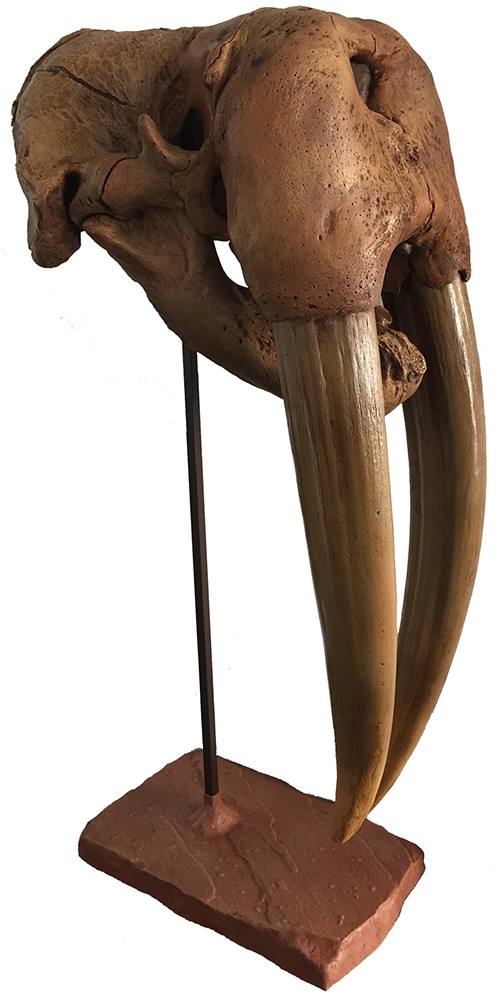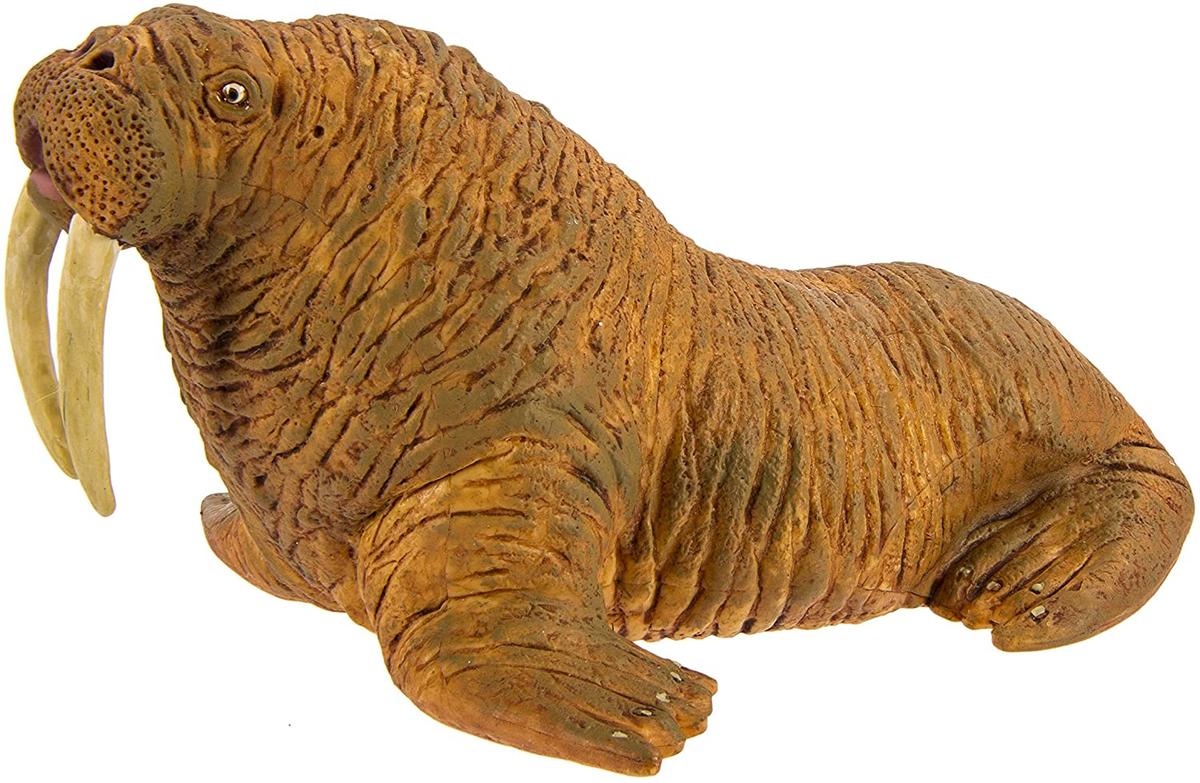Quaternary (~2.6-0 MYA) - pinniped mammal

‘Ice Age’ walruses and modern walruses are the same species, but during the recent glaciations, walruses ranged as far south as San Francisco Bay. That was because sea ice extended that far south, and a walrus lifestyle is strongly associated with sea ice. Mothers leave their calves on sea ice while they feed on the underlying shallow ocean floor. But as climate warms, their newborn calves’ ice sanctuary lies further from rich continental shelf foraging areas. Which means longer, more exhausting swims for the adults, and lengthier intervals that their calves are left alone, exposed to potential predators.
Tusks up to a meter long are one of the distinctive characteristics of these animals. Walrus tusks are not only the second largest canines of living forms, but the second largest in all of Earth’s history. The prize for longest canines belongs to their Arctic companions, the narwhals. *
While male walruses use their tusks in mating battles over harems and dominance displays, female walrus have nearly as impressive tusks. Hence, these formidable features likely evolved for other roles. Walruses use their tusks to break breathing holes through sea ice and then to hang onto the edge of those holes. Their genus name, Odobenus, which comes from Greek words ‘odous’ (teeth) and ‘baino’ (walk), means ‘tooth walker’ refers to the way in which walruses use their teeth to pull themselves out of the water up onto ice floes. The broad snout above the canines in life housed hundreds of still bristly vibrissae that look like whiskers, but are sensitive organs used to hunt mollusks buried in seafloor mud.
Yet apart from their impressive tusks, walrus teeth are highly variable, and often missing. Walrus dentition appears to be in an evolutionary transition. While some walruses have up to thirty-eight teeth, most have far fewer. The skull that provided this cast only had nineteen teeth: two canines, twelve premolars, four molars, and one incipient upper incisor (not visible from a distance). This dentition loss is possible because walruses only use their canine tusks. While they may occasionally crack a mollusk shell with their molars, that is often inadvertent. Instead, walruses rely on the powerful suction generated by pulling their tongues back through their stout vaulted mouths to suck mollusks out of their shells. Although they eat other invertebrates, fish, and occasionally seals, mollusks comprise the bulk (over 95%) of the Pacific walrus diet. Considering that adult male walruses weigh up to two thousand kilograms, a walrus colony requires immense numbers of mollusks to sustain themselves. A relationship memorialized in Lewis Carroll's 1871 poem, ‘The Walrus and the Carpenter’, related to Alice in ‘Through the Looking-Glass’.
*While fossil mammoths had even longer teeth, their tusks happen to be incisors rather than canines.
